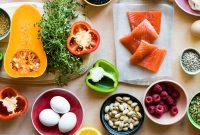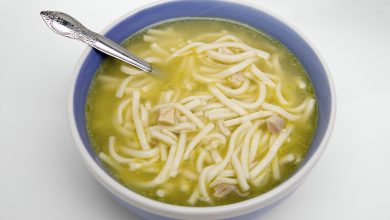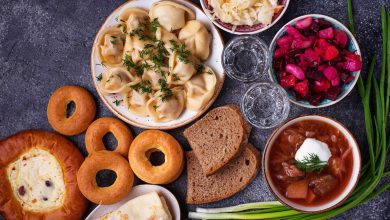The 6 Best Foods You Rarely Eat
Some healthy foods can be found on every nutritionist’s super must-have lists. But often these lists are missing the real gems of healthy eating, or underappreciated foods that don’t get the attention they deserve.
Choosing the best and healthiest products is not always easy, as the selection process can become a war between want and need. Add to that overpriced foods like green salads, for example. They are supposed to be healthy, but in fact, can a person who eats only salads be healthy?
We’re going to tell you about six foods that are usually the last thing to come to mind when it comes to diet or food sources that can improve your diet. It is worth learning more about them, as well as a better understanding of the overall impact of foods on health – this will help you make more informed choices about what can affect your health, weight and wallet.
To make our list of “superfoods,” we looked at unprocessed foods that are widely available, affordable, and rich in nutrients. And, most importantly, great taste. After all, why do we need super food if it is not a delicacy and cannot be made into something amazingly delicious?
In addition to the obvious healthy foods that are only missing a halo, such as blueberries, nuts, salmon, there are six other foods that nutrition experts speak only positively about.
1. Beans and lentils
Often, beans and lentils are the foods that get the least attention in supermarkets.
You can even buy canned beans, which are quite varied and easy on the wallet.
Nutrition experts believe that we are still far from eating the three cups of lentils and legumes a week recommended by many nutritionists in the world. A diet with enough legumes can cause weight loss and has been shown to reduce “bad” cholesterol and increase “good” cholesterol.

And of course, it’s very tasty. Lentils (of which there are a great many varieties and you can choose the one that suits you not only in taste and “cookability”, but also in color) are suitable for salads, soups, and garnishes. Legumes can be added to stews of meat and fish, salads, a mixture of cereals or herbs; you can make a veggie sauce by chopping beans and adding your favorite seasonings (such as hummus, which is made from chickpeas).
2. Watermelon
Watermelon is the favorite summer fruit of most people. But because it is naturally sweet, many avoid eating it because they believe it contains a lot of sugar.
Some nutritionists believe that watermelon should be a staple in everyone’s diet.
An added benefit is that the thick skin of the watermelon keeps pesticides away from the pulp, a fact many experts confirm.
3. Sweet potato
About sweet potatoes, which are now available in any large supermarket, I often think that they contain a lot of calories and carbohydrates. But don’t let this delusion fool you. American nutrition scientists generally believe that sweet potatoes are one of the best foods. And every year.
at least one scientific study is published that confirms this. Sweet potatoes are healthy not only because they are a great source of beta-carotenes, vitamin C, fiber and potassium, but also because this underrated vegetable can be cooked in a variety of ways, and dishes from it can be completely calorie-free.
You can experiment and try slow-cooked sweet potatoes sprinkled with cinnamon, with orange sauce and finely chopped pineapple, or with black beans and salsa, for example. But you can also do it in a simple way: make a puree or cut the sweet potato into thin slices and bake until golden brown.
4. Red cabbage
Many nutritionists vote for the cruciferous vegetable, red cabbage. An excellent source of fiber, vitamins A, D and K, folic acid salts, and a variety of minerals, while being fantastically low in calories and very tasty. Red cabbage is rich in antioxidants and may even help produce cancer-fighting enzymes. You can eat this vegetable raw, grilled, sweet, spicy, as a single meal, or added to just about anything, including soups, salads, stir-fries, sandwiches, and more.

5. Canned tomatoes
Fire-roasted diced tomatoes are a superfood according to many nutritionists. Many people think that fresh vegetables are much better for a diet, but cooking tomatoes helps to release some of the very beneficial substance – lycopene – so that it is better absorbed.
A 2009 study in America showed that a diet high in tomatoes (including cooked ones) helps prevent prostate cancer, and that lycopene, a powerful antioxidant, is suitable for cancer prevention. Although, of course, we must not forget that many other factors related to lifestyle and genetic predisposition also affect the risk of getting cancer, and you should not rely on tomatoes alone.
Fill your pantry with canned tomatoes (in their own juice) for pizza, pasta sauce, and homemade salsa, or add them to soups, stews, stir-fries, herbs and vegetables, or pasta dishes. Plus, when you’re too tired to cook, canned foods are a lifesaver.
If you don’t like canned tomatoes, how about low-salt vegetable juice? It contains only 140 mg of sodium and is an excellent source of vitamin C and potassium.
6. Low-fat natural yogurt
There are many yogurts on the market, but natural low-fat yogurt (which many people call “Greek”) is in a special position. But “Greek” yogurt has a thicker, creamier texture, contains biotic cultures, and is lower in lactose.
Skip the extra calories found in most fruit-flavored yogurts and top up your protein intake with Greek yogurt, which is also great for weight management as it helps keep your body healthy. leaves a longer feeling of fullness. If you like sweet yoghurts, you can add some fruit juice, dried fruit or muesli to it yourself.



